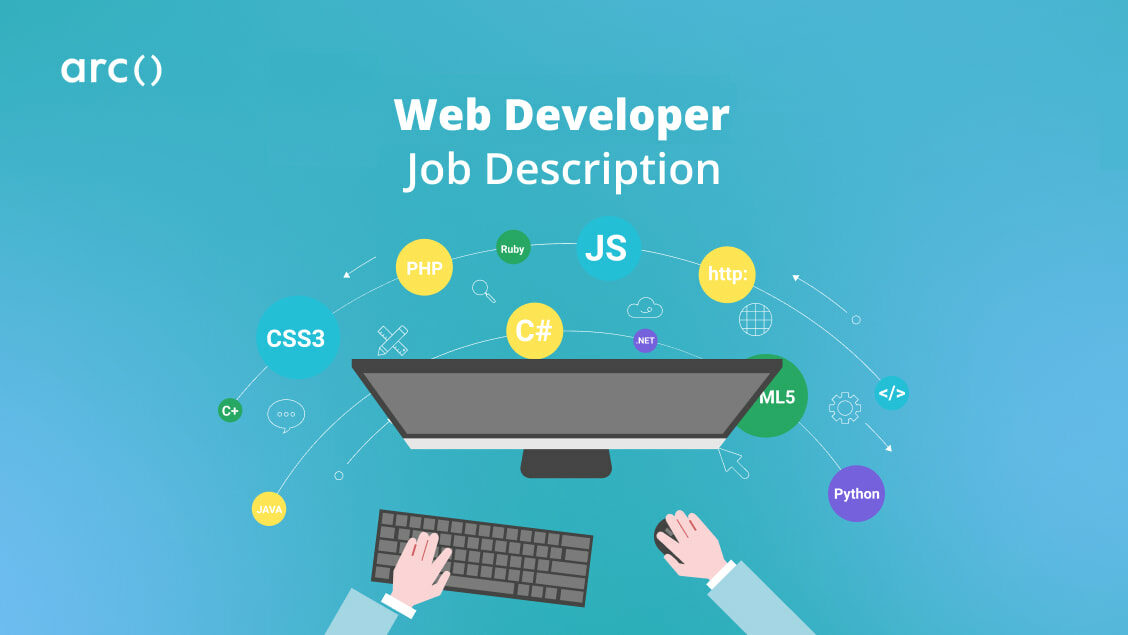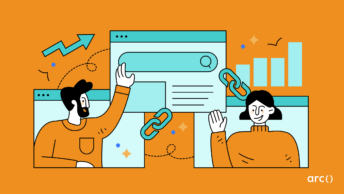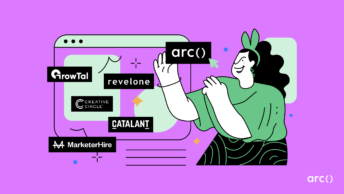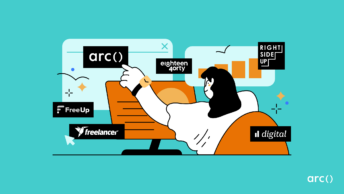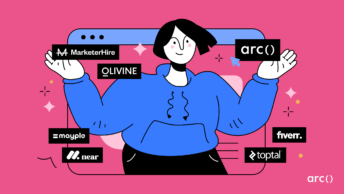The Internet is one of the most omnipresent pieces of technology in human history — and even that might be an understatement. Day in and day out, most of us live lives inextricably linked to this global collection of websites.
Considering that, it’s only logical that the professionals who design, construct, and maintain these websites would be in high demand. Indeed, web developers who are capable of consistently creating websites according to client specifications and user needs are a sought-after commodity on the job market — and a valuable addition to any web-oriented tech company.
That’s why top-level web developers rarely look for their next job long — usually, it’s the recruiters that need to seek them out. By the end of this decade, the projected demand for web developers in the United States alone will rise by almost 10%.
With that in mind, technical recruiters and hiring managers need to ensure they’re competitive on the job market — especially when the mainstream appearance of remote work has allowed pretty much everyone to hire software developers of all kinds, from anywhere in the world.
So, how can you compete in such a challenging environment?
Among other things — you’re going to need to write a web developer job description that highlights the opportunity you’re creating in a clear, comprehensive, and attractive way.
Now, even someone with experience in writing job descriptions might want to improve on their craft — you always want better-suited candidates, more click-throughs, and more applications.
That’s why we’re here with:
- An example of an effective web developer job description template
- A detailed guide on writing the best possible job description yourself
- Multiple useful tips on making sure the best developers get interested enough to apply
Read more below!
Looking for top talent fast? See how Arc can help you:
⚡️ Find developers, designers, marketers, and more
⚡️ Freelance or full-time remote + fully vetted
⚡️ Save up to 80% with global hires
Hire top talent with Arc risk-free →
Sample Web Developer Job Description Template
In our subsequent sections, we’ll give you an in-depth look into every section an effective job description needs to have. Before that, though, we’ll give you a sample website developer job description so have an example of the real deal.
Feel free to use and alter this according to your needs!
Senior Full Stack Web Developer, JavaScript/React.js (Remote) About Us WebDeploy is a startup based in NYC, whose focus is on creating effective mobile-friendly, customer-centric web solutions for e-commerce companies. We’re looking for a full-stack web developer to help us take the stability and quality of our web platforms to the next level. With us, you’ll be joining a remote, globally dispersed team that still maintains a tight-knit, homely environment. Your Role At WebDeploy As a senior web developer at WebDeploy, you'll assist us in coding, designing, and testing website layouts according to industry best practices and client specifications. This role also requires an appreciation for function and user experience, meaning that a certain level of knowledge of graphic design is also necessary. When a client project is completed, you will also assist with the upkeep and maintenance of the website. Responsibilities • Writing clean and efficient code • Working with both programmers and web designers on client websites • Using regular HTML and CSS practices • Constant communication with colleagues while developing and deploying content • Maintaining documentation • Expanding, enhancing, and maintaining a previously built website • Potentially managing a team Must-Have Qualifications • CSS, HTML, JavaScript, React.js • Server architecture • Experience with back-end languages and frameworks such as Python, Ruby, ASP, ASP.NET • In-depth knowledge of database systems like Oracle and SQL • Bachelor’s degree in computing or computer science Nice-to-have Qualifications • Basic knowledge of SEO • Strong multi-tasking abilities under budgetary and time constraints • Excellent intercultural and interpersonal communication skills • Previous experience in a remote work environment Compensation & Perks • Dental, vision, and medical insurance • Paid professional and self-development courses and gym membership • Annual stipend for remote work • Retirement plans, equity, stock options • Paid parental leave • Unlimited paid vacation • Competitive base salary, $160,000 – $210,000 DOE Apply Now! We’re a wholesome, tight team with an employee-focused company culture. All company policies are geared towards healthy work-life balance, a calm discussion of any issues, and proactive mutual assistance between team members! If you want to level up your web development career while working for a company that genuinely cares about its developers, reach out to us right away!
As you’ll see from our in-depth look at the different sections below, there’s no universal template that will work for every company out there.
So, use the sample above as a starting point while writing your front-end, back-end, or full stack web developer job description.
Check out our entire set of tech job descriptions and choose the one which fits your hiring needs best:
- Software Engineer Job Description
- Python Developer Job Description
- Front-End Developer Job Description
- Angular Developer Job Description
- Back-End Developer Job Description
- Cloud Architect Job Description
- JavaScript Developer Job Description
- AWS Cloud Engineer Job Description
- AWS Cloud Practitioner Job Description
- AWS Cloud Architect Job Description
- Scrum Master Job Description
- Full Stack Developer Job Description
- Node.js Developer Job Description
- Cloud Engineer Job Description
- DevOps Engineer Job Description
- Web Developer Job Description
- React Developer Job Description
- Ruby on Rails Developer Job Description
- Agile Product Owner Job Description
- Agile Project Manager Job Description
- Remote Developer Job Description
Or, say goodbye to writing job descriptions altogether with HireAI. Discover top remote developers instantly without manual searching and screening. Try HireAI now!
How to Write a Web Developer Job Description
Now that you have an idea of what an effective web developer job ad looks like, it’s time to go into each section of it in more detail.
A small note before we get into that, though — as a recruiter, you’d do well to place the most relevant information that candidates will want to know up top, instead of making them scroll down in search of it. Also, the sections below and their order are just a basic outline — you can switch it up as you’d like, or even get rid of entire sections if they don’t fit your company.
1. Job title
Naturally, this part isn’t something you can switch up — the job title always comes first, and it has a vital role to play too. When candidates start browsing job boards like Indeed, LinkedIn, or even our job board at Arc, they’ll see plenty of available jobs; especially in the case of web development.
That’s why you need to design your job title carefully — it needs to stand out among the others and draw in the best possible candidates. They should feel compelled to learn more and click on the link towards the whole job ad.
With that in mind, let’s check out some good and bad examples.
Bad Example:
Web Developer
Good Example:
Senior Web Developer — Front End — JavaScript/React.js (Remote)
The difference is plain — while short titles can be effective in certain cases, top candidates like knowing exactly what they’re applying for right away. That’s why the perfect job title includes some essential qualifiers, like:
- Type of web developer (front-end, back-end, full stack)
- Seniority level (senior or junior)
More descriptive job titles also include:
- The location (on-site, hybrid, remote)
- Company name (this might already be included by the job board)
- Specific languages and frameworks (React.js, JavaScript, etc)
2. About Us
As a hiring manager or recruiter, you want to hire the best possible candidates. However, the most qualified web developers like knowing what kind of company they’ll be working for.
Still, this section doesn’t need to be two detailed — two paragraphs at most, highlighting your company culture, industry, and any major services and products you provide. Remember, the goal here is to keep the candidates interested long enough to read on — so throw in a couple of lines dedicated to their mental wellbeing and work-life balance as well.
Here’s an excellent example from a front-end web developer job description by DuBose Web Group via LinkedIn:
About The Company: In 2007, our company was founded with simple intentions: to design professional, inviting, and effective websites for our clients; offer exceptional customer service; and have fun along the way! While we continue to innovate and evolve, our foundation, values, and beliefs remain and continue to guide our company today. We encourage you to review our website to learn more about our company, how we think, and who we serve.
It’s concise, clear, and it shows a fun-loving, employee-focused company culture💪🏼
3. Role summary
Most web developers would like to know what you expect from them if they get accepted into the advertised role. With that in mind, write a quick paragraph giving them a high-level overview of the role. Make it quick, easy to read, and informative.
Here’s the perfect example of a short role overview from Cover via Indeed:
The Role: We are looking for a seasoned JavaScript developer to join our team of exceptionally talented developers. You’ll be contributing to a rapidly growing user-facing project by writing, maintaining and optimizing components using JavaScript ES6, React.js, Webpack and Babel.
Other common titles for this section are “Job summary”, “About the job”, “Role summary”, etc.
4. Responsibilities and duties
Now that your prospective candidates have a bird’s eye view of their potential role in the company, it’s time to tell them what they’ll actually be doing on a daily basis. This can also be rolled into the section we’ve talked about above, but it should still be a separate bullet list so it stands out. Mention some of the processes they’ll be handling, their general day-to-day activities, and some of the tools your candidates will be using.
Here’s a great example from a Front-end Developer ad by TEKSystems on LinkedIn:
• Develop new user facing features • Write reusable code and libraries • Enhance application for maximum speed and scalability • Validate input before submitting to back end • Collaborate with team members and stakeholders • Bridge the gap between graphic design and technical implementation • Define how the application looks and how it works • Translate UI/UX design wireframes to actual code
5. Must-have skills and qualifications
This is the section where you will list out some of the core qualifications that any candidate must fulfill before applying for the advertised position. Ideally, this is another bullet list.
Here’s a practical example from a Deloitte job ad for an Amazon Cloud Developer taken from their careers page:
• Bachelor's degree in Computer Science, Business Information Systems or relevant experience and accomplishments. • 8 years of experience in the IT field. • 1-3 years of development experience on a major cloud platform (Azure, AWS, or GCP) • Experience with modern server-side scripting language such as python, node.js, php, ruby, etc.. • Experience with infrastructure as code tools such as Cloud Formation • Experience with message-based systems and event driven architecture • Experience with API development and the CRUD model • Understand how to automate builds for developer environments from development through production within a Continuous Delivery model. • Understanding of Scrum Agile methodology and have worked on a Scrum team. • Knowledge of SQL, and non-relational (NoSQL) databases • Knowledge of networking, firewalls, load balancers etc.
Try to limit yourself to only the really necessary qualifications here, and don’t go overboard by asking for ridiculous amounts of experience.
6. Additional skills and experience
The section above described the skills and experience that are the prerequisite for any candidate. In contrast, this section showcases the nice-to-have skills that would separate the ideal candidate from the acceptable one.
Here’s an example from a Web Solutions Engineer job ad at Google, taken from their internal job board:
Preferred qualifications: • Experience working with deployment and orchestration technologies (i.e., Docker, Kubernetes, OpenStack, Puppet, Chef, Salt, Jenkins, etc.). • Experience of developing java based applications with good understanding of Object oriented programming concepts, data structures and algorithms • Experience developing java based applications. • Understanding of open source server software (i.e., NGINX, RabbitMQ, Redis, Elasticsearch, etc.). • Understanding of object oriented programming concepts, data structures, and algorithms
7. Requirements on education or certifications
As you may have seen from the Google job ad we’ve linked above — not all companies have strict requirements on formal education anymore. Even the top hitters like Google aren’t afraid to take on someone who has the experience and skills equivalent to someone with a Bachelor’s, or even a Master’s degree.
Of course, this depends on your specific company policies. If your company does have specific educational requirements for their applicants, make sure to state them clearly.
Explain the:
- Required areas of study (computer science, computational mathematics, etc)
- Required lowest level of education (Master’s, Bachelor’s, etc)
Bear in mind that coding bootcamps and other less traditional education paths have been producing top-quality candidates as well. Also, depending on the job role and your company’s niche, your candidates may require some additional clearance, certification, or licensing — include that in this section as well.
8. Working time and location
Today, the location of a job role is much less obvious than it was a couple of years ago. The pandemic has made remote work a mainstream option, especially for tech companies.
With that in mind, make sure your job ad clearly states the location of the advertised position. You can offer the position as a remote one, an on-site role, or a hybrid combination of both.
Also, the appearance of remote roles has made timing and work hours less defined as well. Because of this, you need to specify if there are specific work hours the candidate will have to adhere to, or at least some overlap for vital daily meetings.
9. Compensation, perks, and benefits
This part is pretty much self-explanatory — you just need to list the monetary and non-monetary compensation and benefits your company is prepared to offer its ideal candidate. Some of the more common options are:
- The yearly salary range for the role
- PTO (paid time off) policies
- Remote work office stipend
- Company retreats and team bonding activities
- Health coverage: medical, dental, vision, mental health, etc.
- Regular social events, company lunches, and happy hours
- Reimbursements for professional growth
- Referral bonuses
- Sick leave and bereavement policy
- Spending accounts: FSA, HSA, etc.
- Subscriptions: gym membership, magazines, newspapers, etc.
- Tuition reimbursement
- Parental leave policy
- 401(k) & retirement savings programs
- Ownership, equity, and/or stock options
- Software and hardware
- Performance bonuses
10. Other sections to consider
The parts of a job description for web developers we’ve described above are everything you need to create an eye-catching, compelling job ad. However, there are also other additional sections you may want to consider if you want to make your ad even more informative:
Legalese – There may be national, local, or state laws compelling you to include disclaimers on affirmative action plans, data privacy, or similar legalese statements. In that case, make sure to include these somewhere in your job description.
Type of Employment – Not necessary for regular full-time employees, but certainly important if you’re looking to hire freelance or part-time developers.
Tech stack – Any full stack web developer will want to know what kind of tech stack you’re working with — that’s the only way they’ll be sure that their expertise is the right fit for the position.
Hiring process – Some job ads include specific information on what the hiring process looks like from the moment candidates hit the “Apply” button. This helps them prepare for any live coding sessions or similar tests they’ll have to go through.
Company culture – Your “About us” or “Role overview” sections may already have included some hints towards the inclusive, diverse, and employee-centric nature of your workplace. That being said, a toxic work culture is a complete deal breaker for all professional web developers — so make sure your job ad shows them just how great your workplace is.
Screening – If there are any prey-employment credit checks, drug tests, or other types of screening, make sure to notify all candidates of their existence beforehand.
You can also try Arc, your shortcut to the world’s best remote talent:
⚡️ Access 450,000 top developers, designers, and marketers
⚡️ Vetted and ready to interview
⚡️ Freelance or full-time
Try Arc and hire top talent now →
Tips for Writing a Compelling Job Description for Web Developers
1. Write an inclusive job description
In today’s corporate world, discriminatory language is a big no-no — and rightly so. However, you’d be amazed at how easily people slip into unconscious biases while writing job ads. That’s why you need to ensure you’re only using inclusive language — especially in the role description and job title sections.
There are plenty of problematic phrases that people use in job descriptions unintentionally, especially in the traditionally male-dominated tech industry. Make sure you steer clear of anything that could turn away women, people of color, and other minorities of all kinds.
If you need help parsing your web developer job description for any biased terms and finding inclusive alternatives, use software solutions like the free Gender Decoder or the more complex Textio.
2. Make the job description readable
Proper text formatting is vital for any kind of online writing. Regardless of whether you’re making a blog or a web developer job description, you still want the text to be easily skimmable and readable. Avoid overlong sentences and paragraphs, as well as any hard-to-read sections that could turn away time-poor or impatient web developers.
Separate sections with headings and subheadings, and use bolded text to highlight any important information that you don’t want anyone to miss. If necessary, link to pages on your company website. And use bulleted lists whenever possible.
3. Address candidates directly
If you want your writing to be less dull and more engaging, address candidates directly. For instance, instead of saying something like:
“The perfect candidate for this role would…”
Use sentences like:
“You’d be a perfect fit if you…”
4. Include specific instructions for applying
If you want to filter out any candidates that aren’t qualified enough or simply don’t have the necessary attention to detail, feel free to include a specific instruction somewhere in the job ad. For example, you can tell them NOT to apply through the job board, but to send their resumes to a specified email address instead.
5. End the job ad with an enticing call to action
Finally, after providing all the necessary information — you still need to compel candidates to actually take the time to apply. And seeing as this is basically a sales process where you’re selling your open position to top-tier candidates, you should treat it like one.
End the job description with a short, but enticing CTA (call to action) that will be near the “Apply Now” button.
You can also try Arc, your shortcut to the world’s best remote talent:
⚡️ Access 450,000 top developers, designers, and marketers
⚡️ Vetted and ready to interview
⚡️ Freelance or full-time


